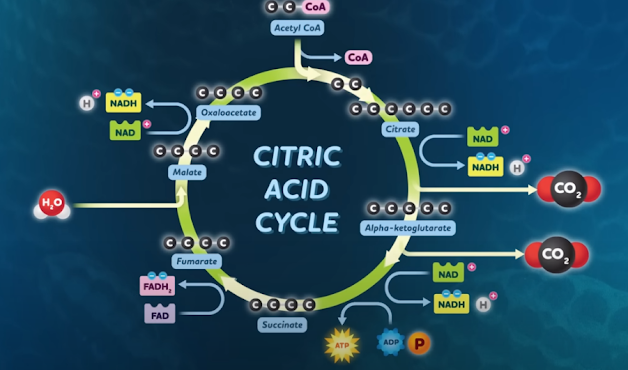Citric Acid Explained For Adults (Cellular Respiration Pt2 )
STARLOG.COM Respiration & Cells INSPIR.TJ3S
"Citric Acid Explained For Adults (Cellular Respiration)"
Into The Cytoplasm
So your pyruvate reactant moves from the cell cytoplasm into the mitochondria. Then it will meet an enzyme that oxidizes it. AKA plucks another pair of electrons for it to be used later. Here is where SOME of the Co2 produced in cellular respiration gets produced.
The Beginning
The Co2 Spits off the pyruvate leaving behind C2. And this 2-carbon molecule is the key to opening the door of the Citric Acid Cycle, or the Krebs Cycle! When the C2 meets C4 (A molecule with 4 carbon atoms).
6 Carbon Atoms
Guess what they make? SIX CARBON ATOM! It´s not as easy as 4 + 2. It's very actually difficult. But too bad the author of this blog post is too lazy. So you guys have to wait for another blog post covering this topic (Or maybe I will forget this. Correction: I will probably forget this)
What You Gain
And then some enzymes come along to remove 2 carbon from the C6 so it turns into C4. But not only that you also got 2 more Co2 molecules. Which we waste by exhaling and the plants are happy because they get the Co2 (Only in the daytime, at night they do respiration).
But don't worry you will also gain one ATP, 3 NADH, and FADH2, in this process alongside the Co2. Notice the name of this isn't Citric acid process or something like that. It is the Citric Acid CYCLE. That means it is going in circles. Notice that we are back to the C4 just like we started with!
Hope you learned something new. Remember to shoot for the Stars! Storlogers. We Post 5:00 AM every day!

Comments
Post a Comment